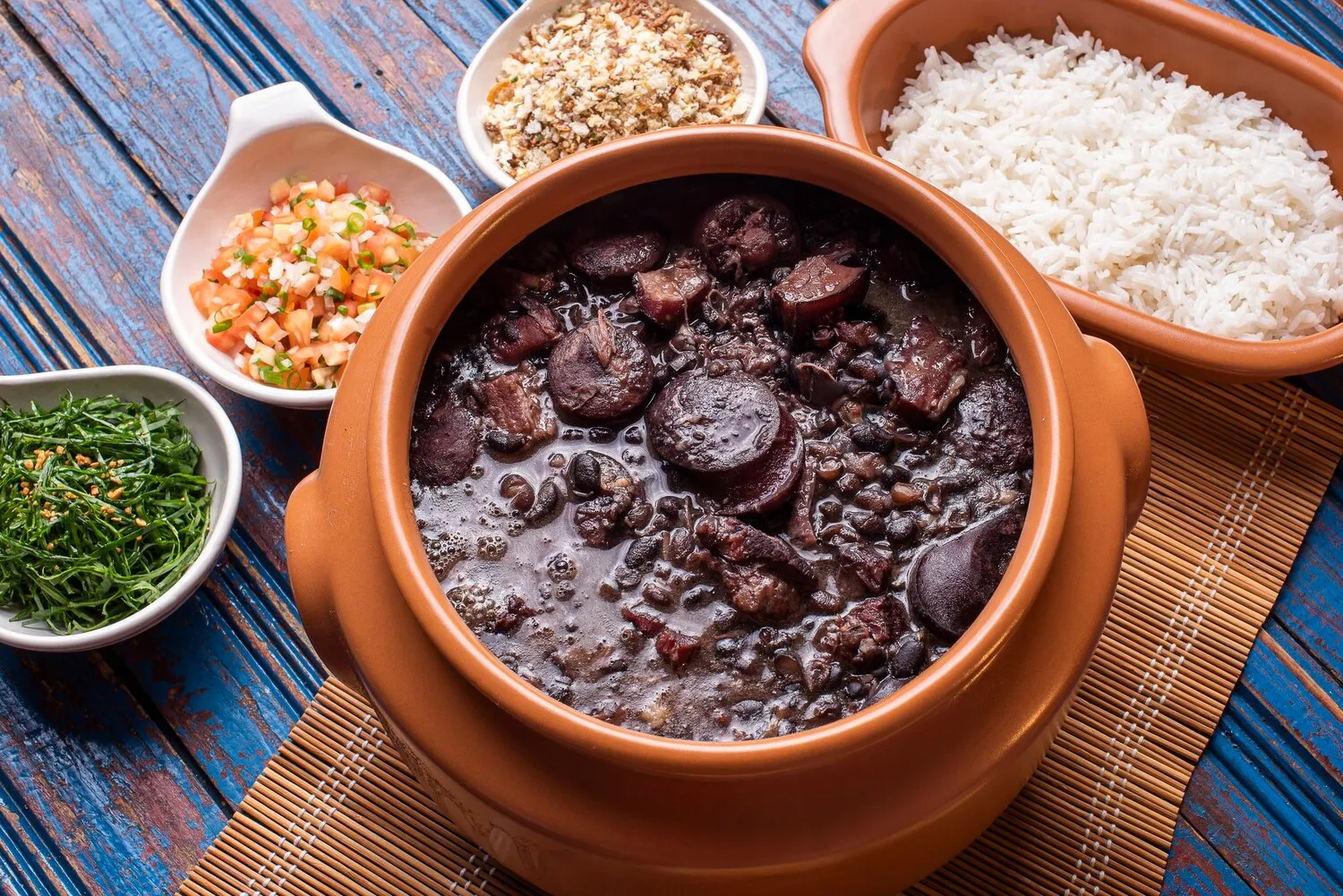
Feijoada
Brazil's national dish, a hearty black bean stew with various cuts of pork and beef, served with rice, collard greens, farofa (toasted cassava flour), and orange slices.
Nutrition Facts
* The % Daily Value (DV) tells you how much a nutrient in a serving of food contributes to a daily diet. 2,000 calories a day is used for general nutrition advice.
Feijoada's origins are debated, with popular narratives suggesting it evolved from slaves utilizing discarded pork parts. More likely, it developed as a hearty, communal meal blending Portuguese and African influences, adapting ingredients and cooking techniques over time.
Feijoada is more than just a dish; it's a social event and a symbol of Brazilian culture, often enjoyed on weekends with family and friends.
Communal Gathering
Feijoada is typically prepared in large quantities and shared amongst a group, fostering a sense of community and togetherness.
Weekend Tradition
It's commonly eaten on Saturdays or Sundays, allowing ample time for preparation and relaxed enjoyment.
Regional Variations
While the basic concept remains the same, regional variations exist in terms of specific cuts of meat and spices used.
National Identity
Feijoada is widely considered Brazil's national dish, representing the country's rich culinary heritage and cultural diversity.
Feijoada is characterized by its rich, savory, and smoky flavors, derived from the combination of black beans, various cuts of pork and beef, and a medley of spices.
The black beans provide a deep, earthy base, while the pork (including smoked sausage, bacon, pork ribs, and often salted pork) contributes smoky, salty, and fatty notes. Beef, sometimes including dried beef (carne seca), adds a more robust meatiness. Garlic, onions, bay leaves, and chili peppers are common seasonings, adding aromatic and spicy dimensions. The accompanying rice provides a neutral counterpoint, while collard greens offer a bitter, vegetal freshness, and orange slices contribute acidity and sweetness for balance. Farofa (toasted cassava flour) provides a crunchy texture and nutty flavor.
Soaking the Beans
Soaking the black beans overnight (or for at least 8 hours) helps to reduce cooking time and improve their texture.
Desalting the Meat
If using salted pork or beef, desalting it is crucial to prevent the dish from being overly salty. Soak the meat in water for several hours, changing the water frequently.
Cooking Time
Feijoada requires a long, slow cooking process to allow the flavors to meld and the meat to become tender. Patience is key!
Serving Suggestions
Traditionally, Feijoada is served with rice, collard greens (couve), farofa (toasted cassava flour), and orange slices. Other accompaniments may include hot sauce, pork cracklings (torresmo), and fried eggs.
Explore additional Brazilian Stew dishes and restaurants
Explore Brazilian StewDiscover top dining spots and culinary experiences in Rio Claro.
Explore Rio ClaroLearn more about the food culture, restaurant scene, and culinary heritage of Brazil.
Explore Brazil